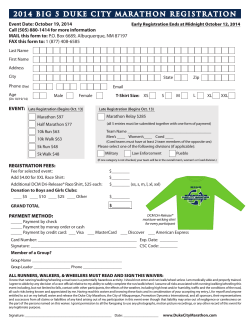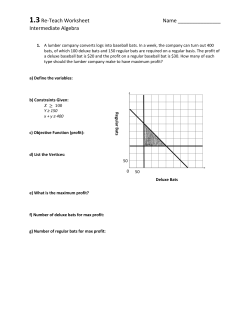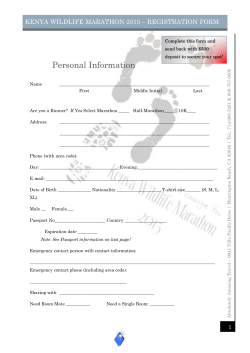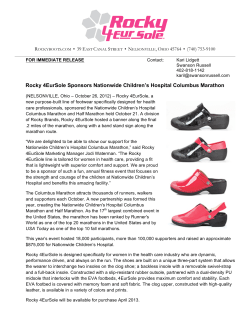
How we have Fun-Elementary
How we have Fun-Elementary This lesson meets State Standards B.4.1 Identify and examine various sources of information that are used for constructing an understanding of the past, such as artifacts, documents, letters, diaries, maps, textbooks, photos, paintings, architecture, oral presentations, graphs, and charts, B.4.4 Compare and contrast changes in contemporary life with life in the past by looking at social, economic, political, and cultural roles played by individuals and groups, E.4.3 Describe how families are alike and different, comparing characteristics such as size, hobbies, celebrations, where families live, and how they make a living. How we have fun focuses on the activities from 1900-1950s. Spring, summer, fall, and winter activities are all represented. The power point presentation is a collection of quotes and photos of each activity. The Expansion activities allow students to go deeper into some of the activities. Included in this lesson is a Power Point presentation filled with exhibit pictures and primary sources for fun in Marathon County. The presentation is a great preview or post lesson activity for the exhibit. Along with the power point presentation is a list of vocabulary terms highlighted throughout the presentation. We also included expansion activities to go with the lesson. Vocabulary Congregate Tremendous Expansion Activity Suggestions 1. 2. 3. 4. 5. Opinion Cards Activity Baseball Bat materials which is best? Activity 1940s Football Vs Today’s Football Kids in Marathon County during the early 1900s Listening to the Radio Marathon County Historical Society 1 Opinion Cards Activity The cards included can be used in various ways. Here are a few suggestions; Play scoot Have students fill in their answers and form a continuum in the classroom having students stand where their opinion falls. Have students share their opinions trying to sway students to their part of the continuum. Use the cards during the power point presentation for reflections. Use the cards as a jumping board into a writing activity. Use them as task cards. Marathon County Historical Society 2 Opinion Cards Would you prefer to go to a movie or play? Why? What would you use skis for besides entertainment? Have the way people of Marathon County have fun changed over the years? How do you have fun in Marathon County? Marathon County Historical Society 3 Baseball Bat Materials, which is best? Harold Huseby started making bats as a hobby in 1929 when he was living on a farm about 15 miles east of Wausau and playing semipro baseball in the Wolf River Valley League. He turned his hobby into a part time enterprise when during the depression he was a substitute mail carrier and on many days worked only two or three hours. “To fatten my income I began making more and more bats,” he recalled. “One year I made about 500 of them and sold every one. I’d carry some in my car when I played in this area nd I’d sell them to players and managers.” He also mailed postcards to teams and players throughout the country offering them custom made bats. His prices in those days were a dozen bats for $17. Although he became a regular mail carrier in 1937, he found time to make several dozen bats each year for regular customers.” How much money did Harold Huseby make for each bat? Today bats are made out of four main materials, ash, maple, bamboo, and aluminum. Research to find the pros and cons of each material and decide which is best. The following are links to a few videos demonstrating the bat making process. How a baseball bat is made http://www.youtube.com/watch?v=zbLeXlhDdJ4 How It’s Made Mini-Episodes: Aluminum Baseball Bats http://science.discovery.com/tv-shows/how-its-made/videos/how-its-made-mini-episodesaluminum-baseball-bats.htm Marathon County Historical Society 4 Baseball Bat Materials, which is best? Pros Cons Ash Maple Bamboo Aluminum In your opinion, which material is the best for a bat? Why? ______________________________________________________________________________ Why was Harold Huseby able to easily find the materials to make the bats? _____________________________________________________________________________ Would he be able to easily find those materials in Marathon County today? ______________________________________________________________________________ Marathon County Historical Society 5 1940s Football Verses Today’s Football Use the information from assistant coach Tom Yelich from Wausau High School and a member of the 1941-1943 Wausau High School team to fill in the Venn Diagram. “If there was one thing that revolutionized football, it was weights. We never had any weights. That came much later. We relied on a lot of conditioning and physical contact. If we had players 180-190 pounds we were doing quite well. We didn’t have any mouth guards but, for the time, our equipment was exceptionally good. We had better equipment than some small colleges. We only had three coaches. There was myself as line coach. “Brock” [Win Brockmeyer] during the summer and in the fall we practiced after school each day for about two hours.” “We had two-a-day [practices] during the summer and in the fall we practiced after school each day for about two hours.” Tom Yelich, assistant to Coach Win Brockmeyer “We didn’t have face masks. The only time a player wore a face mask was if he had a broken nose.” Gordon Saindon, member of Wausau High School team in 1941-1943 Marathon County Historical Society 6 List two similarities between 1940s football and today’s football. ______________________________________________________________________________ ______________________________________________________________________________ ______________________________________________________________________________ List two differences between 1940s football and today’s football. ______________________________________________________________________________ ______________________________________________________________________________ ______________________________________________________________________________ Why do you think football has changed since the 1940s? ______________________________________________________________________________ ______________________________________________________________________________ ______________________________________________________________________________ Marathon County Historical Society 7 Kids in Marathon County during the early 1900s “Whenever the weather permitted we were always outdoors. There was always softball, riding bikes and if we could get enough kids together we played “Pom Pom Pullaway”, “Annie Annie Over the House”, a lot of ball games, a lot of marble games, hopscotch… And “Kick the Can” – [we had] an old tin can and it was set on a block of wood. And one kid was the goalie and was supposed to protect the can. And in the meantime [he had to] try and find where the other ones had hidden. If someone could come when the goalie was gone and kick the can off, that was a point for our side. For “Pom Pom Pullaway” we’d have two teams. And then we’d holler “Red Rover, Red Rover, let so and so come over” and they were supposed to run and try and break through our arms that were joined. And if they couldn’t then we had them on our team. If they made through they were the winners and they went back to their team. And then it was the other’s side turn to call “Red Rover”.” Mae Lensmire Gliniecki Try playing some of the games from the 1930s-1950s. Pom Pom Pullaway – instructions above Kick the Can – instructions above Softball Paper dolls http://www.free-paper-dolls.com/support-files/suzy.pdf Marbles http://www.imarbles.com/howtoplaymarbles.php Hopscotch http://library.thinkquest.org/J0110166/hopscotch.htm Annie Annie Over the House http://www.emporia.edu/cgps/tales/f87tales.html Marathon County Historical Society 8 Listening to the Radio “[in the 1930s] every evening at 6:00 we’d listen to “Amos and Andy”, before they went out in the barn [to milk] and we all sat and listened to it. Then on WXCO we’d listen to “Whoopie John”. The first TV I saw [in the early 1950s] was when we went to Milwaukee, it was at some of my husband’s relatives. And, oh my God, to think you saw a picture in a box. It was unbelievable you know.” Ruth Hartwig Ollhoff Entertainment at home usually involved the family radio. People would pull their chairs up to the radio and stare at it as they listened to the story, similar to the way we watch television today. Listen to an episode of The Lone Ranger, it may be difficult to stay focused without pictures, but listen to all the sound effects to help you picture what is happening. http://archive.org/details/The_Lone_Ranger_Page_01 What happened during the story? ______________________________________________________________________________ What helped you picture the story? ______________________________________________________________________________ Compare The Lone Ranger to a television show. ______________________________________________________________________________ ______________________________________________________________________________ Why do you think families would want to listen to these shows every week? ______________________________________________________________________________ Think of a television show you watch today, would it work as a radio program? Why or why not? ______________________________________________________________________________ ______________________________________________________________________________ Marathon County Historical Society 9
© Copyright 2025


















![[sample] •](http://cdn1.abcdocz.com/store/data/000276252_1-14409bc2560e9ff610fe6fe9347b4d62-250x500.png)


